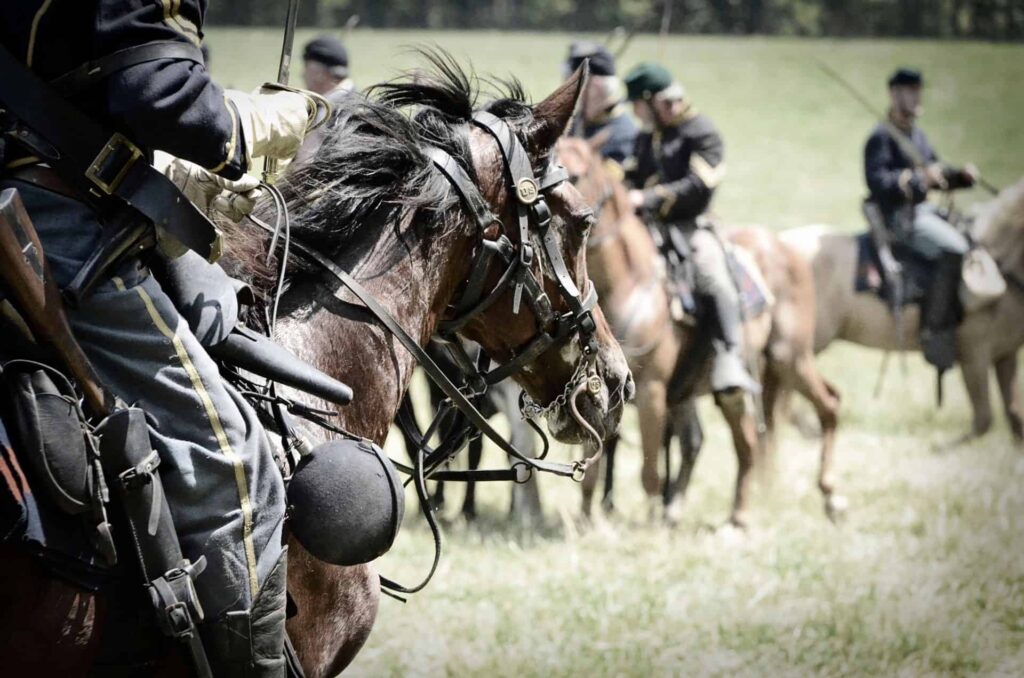Throughout history, horses have played a crucial role in warfare, serving as both transportation and companions for soldiers on the battlefield. These war horses were known for their extreme resilience, fierceness, and loyalty to their riders. Some of these horses have even gained fame for their heroic actions and contributions to major battles, becoming symbols of bravery and strength.
One notable aspect of war horses is the unique bond they shared with key military figures, often accompanying them into the heat of battle. From ancient civilizations to the modern age, horses have been a pivotal part of many military campaigns, demonstrating the important task they undertook in ensuring victory or defeat. Various breeds and attributes of horses have been utilized over the years depending on factors such as the terrain or climate of the conflict.
As technology has evolved and militarization shifted from cavalry to mechanized warfare, the role of war horses has diminished. Yet, their contributions to human history and warfare remain immortalized through memorials, tributes, and preserved stories that highlight their courage and sacrifice. Remember the vital part that horses played in shaping the course of history and warfare as we know it today.
Key Takeaways
- War horses have played a role in warfare, marked by their resilience, loyalty, and fierce nature.
- These horses have been deeply connected to key military figures and vital to numerous battles across different eras.
- Despite the influence of technology on warfare, war horses’ contributions remain memorialized and honored in various ways.
The Role of Horses in War
Throughout history, horses have played a significant role in battles and wars. They have served as tools in warfare, carrying soldiers, supplies, and equipment across various terrains. Horses have been useful not only for transportation purposes but also as integral parts of specialized military units, such as cavalry.
Cavalry units have been vital in many historic battles, proving to be decisive factors in numerous conflicts. These units mainly comprised two types: light cavalry and heavy cavalry. The former was used for reconnaissance, communication, and harassment of the enemy, while the latter was responsible for launching powerful charges and breaking enemy formations. In both cases, horses provided speed, agility, and a psychological advantage that often helped turn the tide in favor of their armies.
The introduction of stirrups revolutionized the way horses were used in war. Stirrups allowed soldiers to maintain better balance and control while riding, enabling them to wield weapons more effectively and perform advanced maneuvers on the battlefield. This technological development greatly increased the effectiveness of cavalry, making war horses even more valuable assets in battle.
One of the most famous war horses of all time was the destrier, a powerful and agile steed often ridden by knights and high-ranking soldiers. Destriers were highly sought-after war horses, known for their speed, strength, and ability to carry heavily armored riders into combat. Kings and generals often rode these prized horses, symbolizing power and authority to boost the morale of their troops.
Horses also played a crucial role in transporting supplies, including food, weapons, and medical equipment, to the frontlines. Without these reliable animals, armies would struggle to maintain a steady supply chain and would risk running out of vital resources. Fast, sturdy, and able to traverse a wide variety of terrains, horses ensured that supplies reached soldiers during lengthy campaigns or sieges of enemy cities.
The role of horses in war cannot be overstated. From the swift, agile light cavalry to the fearsome charge of heavy cavalry, horses have been indispensable assets on the battlefield. Their ability to carry soldiers, supplies, and equipment has made them a constant presence throughout the history of warfare, earning their place in the annals of military history.
Famous War Horses Through History
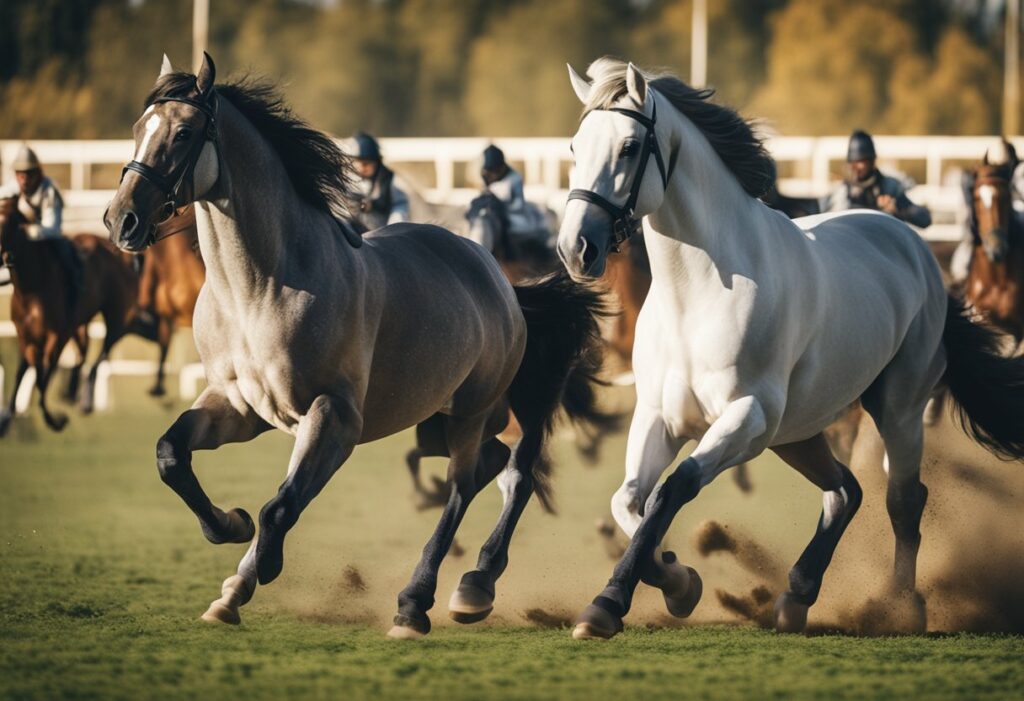
Throughout history, horses have played a crucial role in various conflicts. Some of the most famous war horses are not only known for their exceptional physical traits but also their remarkable stories and relationships with their riders. Here are some of the most renowned war horses from different periods and regions of the world.

Bucephalus was the legendary horse of Alexander the Great. This stallion is known for the close bond he shared with his rider and his incredible battlefield prowess. Bucephalus accompanied Alexander on numerous campaigns, making him one of the most renowned war horses in ancient history.
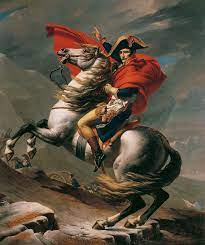
Marengo was Napoleon Bonaparte’s trusted horse throughout many of his military campaigns. This Arabian stallion was known for his endurance and regularly covered long distances while carrying the French emperor. Marengo secured his place among the ranks of famous war horses.
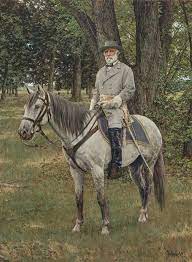
Traveller was the loyal horse of Confederate General Robert E. Lee during the American Civil War. A mix of thoroughbred and grey American saddlebred, Traveller acquired fame for his ability to cover great distances with ease and remain steady amidst the noise and chaos of battle.
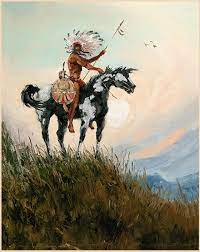
Comanche was an American Indian horse that became known as the sole survivor of the Battle of Little Bighorn. The U.S. Army purchased this mixed-breed horse and served as the personal mount of Captain Myles Keogh of the 7th Cavalry Regiment. Comanche’s resilience earned him the title of a heroic war horse.
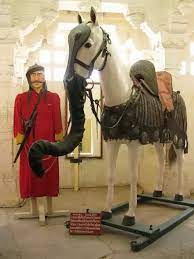
Chetak was a legendary horse belonging to the Indian warrior Maharana Pratap. Known for his unwavering courage during the Battle of Haldighati, Chetak played a significant role in carrying Maharana Pratap to safety despite his injuries. Chetak is a symbol of bravery and loyalty in Indian history.

Sergeant Reckless was a Mongolian mare who gained fame during the Korean War for her role in transporting ammunition and supplies for the United States Marine Corps. Her heroic actions and strength made her an iconic war horse, eventually earning a promotion to the rank of staff sergeant.
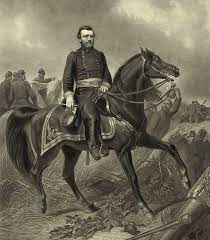
Cincinnati was a special horse for General Ulysses S. Grant during the American Civil War. A Shire stallion, Cincinnati was an imposing figure and considered one of Grant’s finest horses. He was even chosen by President Abraham Lincoln to ride during wartime parades.
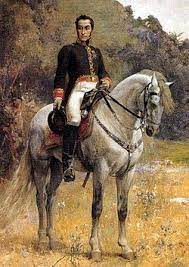
Palomo was Simon Bolivar’s reliable white stallion during his campaigns in South America. As an Andalusian-Arabian mix, Palomo’s grace and agility made him an ideal mount for the liberator of northern South America.
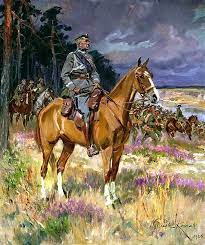
Kasztanka was a mare who served Polish Marshal Józef Piłsudski during World War I. This distinctive chestnut horse with a white blaze became a symbol of Polish independence and defiance against the Germans.
Famous war horses such as these have played critical roles in different cultures’ historical narratives. Their bravery, loyalty, and exceptional traits have left a lasting impact, proving that their legacy transcends the centuries.
Horses and Key Military Figures
Throughout history, horses have played a critical role in warfare, often serving as the trusty companions of key military figures. These horses were not only important for transportation but also symbolized the strength and bravery of their riders.
One famous example is Alexander the Great’s horse, Bucephalus, who accompanied him into numerous battles, including the Battle of Issus against the Persians. The loyalty between horse and rider was so strong that when Bucephalus died, Alexander named a city after him in honor of this exceptional equine.
During the American Civil War, many prominent war horses carried their riders to battle, including Confederate General Robert E. Lee’s beloved horse, Traveller. Lee’s Union counterpart, General Ulysses S. Grant, rode a horse named Cincinnati. Both Traveller and Cincinnati were well-respected steeds, known for their courage and endurance during the heat of battle.
The Battle of Waterloo offered another opportunity for legendary horses to demonstrate their prowess. Napoleon Bonaparte rode Marengo, while his adversary, the Duke of Wellington, was mounted on Copenhagen. Both horses played crucial roles in the historical battle that still captivates our imaginations.
Maharana Pratap, a Rajput warrior and ruler from medieval India, fought alongside his trusted horse Chetak in the epic Battle of Haldighati. Chetak’s bravery and unwavering loyalty to his rider have been immortalized in Rajasthani folklore, emphasizing the deep connection between these two warrior souls.
Marshal Jozef Pilsudski, the renowned Polish statesman and military leader, had a horse named Kasztanka, which accompanied him during many of his military campaigns. Similarly, Simon Bolivar, the “Libertador” of South America, is often depicted on his horse Palomo, symbolizing his determination and passion for freeing the oppressed nations of Latin America.
Captain Myles Keogh, an officer in the United States Army, rode a horse named Comanche during the Battle of the Little Bighorn. Sadly, Keogh lost his life in the conflict, but Comanche was found and remains one of the very few survivors of the battle, garnering a reputation as a horse that could withstand hardship and adversity.
From Alexander the Great to Abraham Lincoln, these famous military figures relied on their noble steeds during crucial moments in their lives and careers. The stories of these horses underscore the importance of these magnificent creatures in shaping the course of human history.
Horses in Major Battles
Throughout history, horses have played a crucial role in warfare, as evidenced by their involvement in major battles in various parts of the world. In the Civil War, for instance, cavalry charges were instrumental in shaping the outcomes of key conflicts. Both Union and Confederate forces relied heavily on their mounted troops during significant engagements, such as the Battle of Gettysburg.
The British army, too, made extensive use of horses during the First World War. Cavalry units were deployed on the Western Front, and their involvement in battles such as the Battle of the Somme was crucial. The use of horses during this period helped maintain supply lines and facilitate rapid troop movement across the battlefields.
In India, the Battle of Haldighati is another example of the vital role horsemen played in warfare. During the 16th century, the Rajput warrior Maharana Pratap led his cavalry to face the Mughal forces under Akbar. The agility and speed of Maharana Pratap’s horses were crucial in executing strategic maneuvers.
The Battle of Hydaspes, fought by Alexander the Great against King Porus of the Paurava kingdom in 326 BC, showcased the prowess of the ancient Greek cavalry. Alexander’s Companion Cavalry played a significant role in achieving his victory, highlighting the importance of horses in ancient battles.
During the Napoleonic Wars, horses were a crucial element in most major battles fought by the French army led by Napoleon Bonaparte. One particularly memorable encounter was the Battle of Marengo in 1800, where Napoleon’s swift and decisive use of cavalry ultimately secured victory against the Austrians.
Similarly, horses played huge roles during the battle of Little Bighorn, also known as Custer’s Last Stand, during the American Indian Wars. The United States Cavalry faced the combined forces of the Lakota, Cheyenne, and Arapaho tribes in a fierce confrontation that ultimately ended in a decisive victory for the Native Americans.
Finally, during the Korean War, horses were widely employed in transporting supplies and casualties across the harsh terrain. Although they weren’t used in direct combat, their presence was key in sustaining the troops on the battlefields.
Horses have been an integral part of warfare across various eras and regions, participating in significant battles and playing diverse roles from combat to logistics. The historical importance of these majestic animals in shaping the outcomes of conflicts cannot be understated.
Horse Breeds and Attributes in War
Throughout history, various breeds of horses have demonstrated exceptional attributes that made them exceptional companions during warfare. Their physical characteristics and innate qualities, like speed, courage, and loyalty, have been crucial in many battles, like the ones led by the British Army, the Confederate, the Union, and even the United States Army.
One famous war horse breed was Bucephalus, the companion of Alexander the Great who played a significant role in ancient military conquests. Known for their bravery and steadfastness, these horses were renowned for their ability to carry soldiers and artillery in battle. Their speed and maneuverability on the battlefield were vital in enabling swift attacks and tactical movements in various aspects of warfare.
Different breeds were also employed depending on their specific characteristics. Riding horses, for instance, played a significant part in carrying wounded soldiers to safety, demonstrating their loyalty and ability to remain calm under tense circumstances. In contrast, some horses, primarily known for their speed, served primarily in reconnaissance or quick engagement missions. Horses with exceptional strength were vital for pulling heavy guns and artillery.
Horsemanship, a skill that dates back to ancient warfare, is the practice of mastering the art of riding, handling, and maintaining horses. This skill was critical in ensuring the effectiveness of mounted soldiers during battle. Certain breeds were more suitable for certain tactics and strategies because of their innate qualities, which allowed them to be more easily trained and adept at specific combat situations.
In the NFL, the term “War Horse” refers to retired players who exhibited strength, courage, and resilience throughout their careers, mirroring the qualities of their equine counterparts. These individuals have served as iconic figures embodying the fighting spirit and determination found in the historical war horses.
Horse breeds and their attributes have played a massive role in warfare throughout history. Be it their speed, courage, loyalty, or ability to carry artillery and guns, these animals have shaped the course of battles and hold a place in the annals of military history.
Memorials and Tributes to War Horses
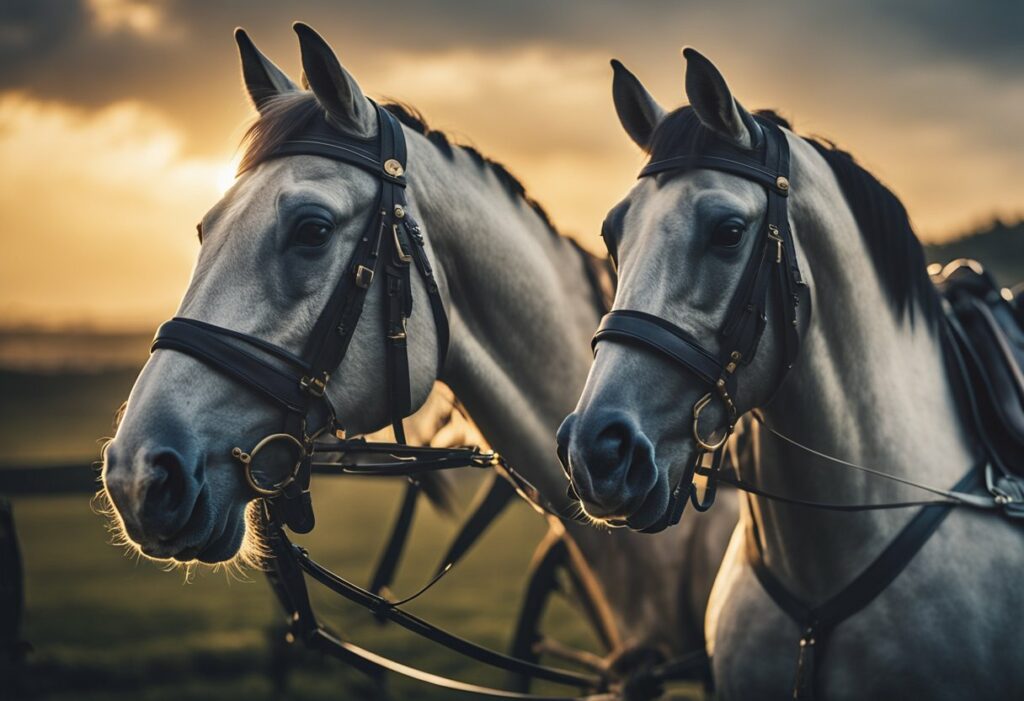
War horses have played a significant role throughout history, carrying their riders through countless battles and displaying unwavering loyalty. As symbols of bravery and strength, these heroic animals have inspired various memorials and tributes.
The famous war horse Copenhagen served the British Army during the Napoleonic Wars and was the mount of the Duke of Wellington during the Battle of Waterloo. After his death, Copenhagen was buried with full military honors, and a monument can be found on the grounds of Stratfield Saye House, where he spent his retirement.
A lesser-known war horse, Tetanus, served in the British Army during World War I, during which he was injured multiple times. His story illustrates the harsh conditions that war horses faced, as well as their incredible dedication to duty. Unfortunately, there is no specific monument dedicated to Tetanus, but he is remembered through various forms of literature and artwork that portray the sacrifices made by war horses.
In Mewar, Rajasthan, India, the region’s Rajput warriors have a rich history of horse-riding and horsemanship. The bond between the Rajputs and their horses was so strong that their horses were often considered family members. When the Mughal Empire invaded Mewar in the 16th century, the Rajputs’ horses played a crucial role in resisting the invasion. Today, traditional ballads are sung in the region, honoring the loyalty and bravery of these valiant horses, and keeping their memory alive for generations.
Memorials and tributes to war horses manifest in various forms, from monuments and literature to traditional ballads. These tributes not only recognize their invaluable service but also celebrate their bravery and loyalty in the face of adversity.
Technological Changes and Impact on War Horses
Throughout history, war horses played a crucial role in various campaigns and battles, including those led by famous commanders like Porus in India or generals in Latin America. As technology evolved, the roles and capabilities of these war horses also changed, impacting their performance on the battlefield.
In the early days of mounted warfare in Eurasia, horseshoes were not commonly used. However, the invention of horseshoes greatly improved the mobility and endurance of war horses, allowing them to participate in campaigns over longer distances and varied terrains. As a result, horses such as those ridden during the Battle of Lexington gained a strategic advantage, contributing to the success of their respective armies.
In addition to horseshoes, the development of saddles and stirrups, both in Europe and across other regions like Latin America, had a significant impact on war horses by enhancing their riders’ stability and control. These advancements allowed horse-mounted soldiers to wield weapons more effectively and stay mounted during intense combat situations. For example, the US Army employed well-trained horses that were crucial in various battles during their history, especially in the Westward Expansion.
As military technologies advanced, war horses adapted to the changing landscape of warfare. They were included in combination with infantry and other units to maximize their effectiveness. One notable example is the Siege of Porus, where horses were used in conjunction with war elephants to form formidable battle lines. This combination allowed the horse-mounted soldiers to attack the enemy, while the armored elephants provided protection and intimidation.
However, as modern warfare evolved, the role of war horses gradually diminished. The introduction of mechanized vehicles and artillery increasingly replaced these noble animals in many military operations. Despite this decrease in importance, war horses still hold a special place in history, symbolizing a connection between military campaigns of the past and modern technologies that continue to shape the future of armed conflict.
Frequently Asked Questions
What were the notable war horses in World War II?
During World War II, horses played a vital role in transportation, communication, and logistics. Some notable war horses include Sergeant Reckless, a Korean mare who served the US Marine Corps and carried ammunition and supplies, and Jenny, a horse that was part of the British Army’s charge during the Battle of El Alamein. Reckless was awarded several military decorations for her contributions.
Which breeds were commonly used as military horses?
Military horses were carefully chosen based on their strength, agility, and endurance. Some commonly used breeds include the Arabian, Thoroughbred, and Andalusian. The Arabian, known for its speed and stamina, was widely used in the Middle East. Thoroughbreds were used in English cavalry for their speed and agility, while the Andalusian breed was popular among Spanish troops due to its power and calm temperament.
Can you name famous war horses in American history?
There are several famous war horses in American history, including George Washington’s horse, Nelson, and General Robert E. Lee’s horse, Traveller. Comanche, an American Mustang, was the only survivor of General George Armstrong Custer’s cavalry detachment at the Battle of Little Bighorn.
Which horses played significant roles in the Great War?
During the Great War, known as World War I, millions of horses were utilized for various tasks on the battlefield. Notable horses include Warrior, the steed of General Jack Seely, who survived numerous battles and obstacles. Another example is the brave and loyal Marengo, who served Napoleon Bonaparte throughout his military campaigns.
What were the common names given to medieval war horses?
In medieval times, war horses were often given names reflecting their capabilities, lineage, or the personality of the rider. Some common names included Charger, Palfrey, and Destrier. Charger was a name given to a brave and robust war horse, while Palfrey denoted a more refined horse used for ceremonial purposes or by high-ranking individuals. Destrier was a term used for the elite war horses ridden by knights during battles and jousts.
What notable horses were present during the Civil War?
During the American Civil War, horses were integral in the transportation of troops and supplies, as well as in combat. Notable horses include General Ulysses S. Grant’s horse, Cincinnati, and Confederate General Stonewall Jackson’s horse, Little Sorrel. The unique relationship between soldiers and their horses during this time helps emphasize the significance of these animals in American history.
Last Updated on February 29, 2024 by Nate Dewsbury


